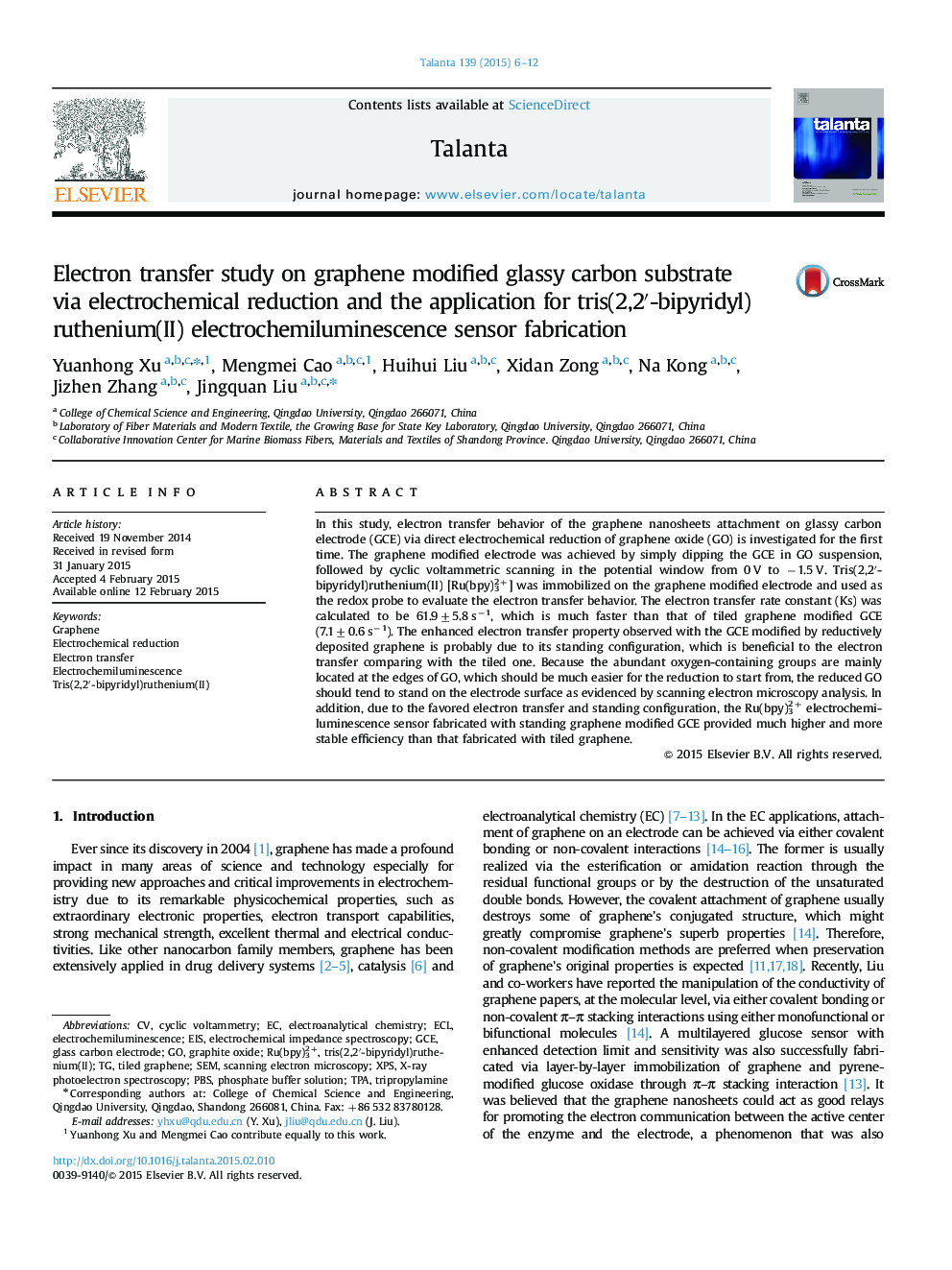| کد مقاله | کد نشریه | سال انتشار | مقاله انگلیسی | نسخه تمام متن |
|---|---|---|---|---|
| 1242230 | 1495796 | 2015 | 7 صفحه PDF | دانلود رایگان |

• Electron transfer of attached graphene via electrochemical reduction was studied.
• The attached graphene was with standing configuration on the electrode.
• Ru(bpy)32+ was used as the redox probe to evaluate the electron transfer.
• The Electron transfer is much faster than that of tiled graphene modified GCE.
• Stable Ru(bpy)32+ ECL sensor was fabricated with the standing graphene.
In this study, electron transfer behavior of the graphene nanosheets attachment on glassy carbon electrode (GCE) via direct electrochemical reduction of graphene oxide (GO) is investigated for the first time. The graphene modified electrode was achieved by simply dipping the GCE in GO suspension, followed by cyclic voltammetric scanning in the potential window from 0 V to −1.5 V. Tris(2,2′-bipyridyl)ruthenium(II) [Ru(bpy)32+] was immobilized on the graphene modified electrode and used as the redox probe to evaluate the electron transfer behavior. The electron transfer rate constant (Ks) was calculated to be 61.9±5.8 s−1, which is much faster than that of tiled graphene modified GCE (7.1±0.6 s−1). The enhanced electron transfer property observed with the GCE modified by reductively deposited graphene is probably due to its standing configuration, which is beneficial to the electron transfer comparing with the tiled one. Because the abundant oxygen-containing groups are mainly located at the edges of GO, which should be much easier for the reduction to start from, the reduced GO should tend to stand on the electrode surface as evidenced by scanning electron microscopy analysis. In addition, due to the favored electron transfer and standing configuration, the Ru(bpy)32+ electrochemiluminescence sensor fabricated with standing graphene modified GCE provided much higher and more stable efficiency than that fabricated with tiled graphene.
Figure optionsDownload as PowerPoint slide
Journal: Talanta - Volume 139, 1 July 2015, Pages 6–12